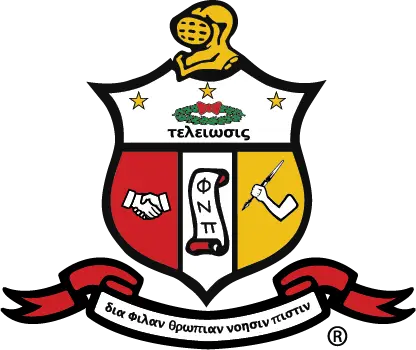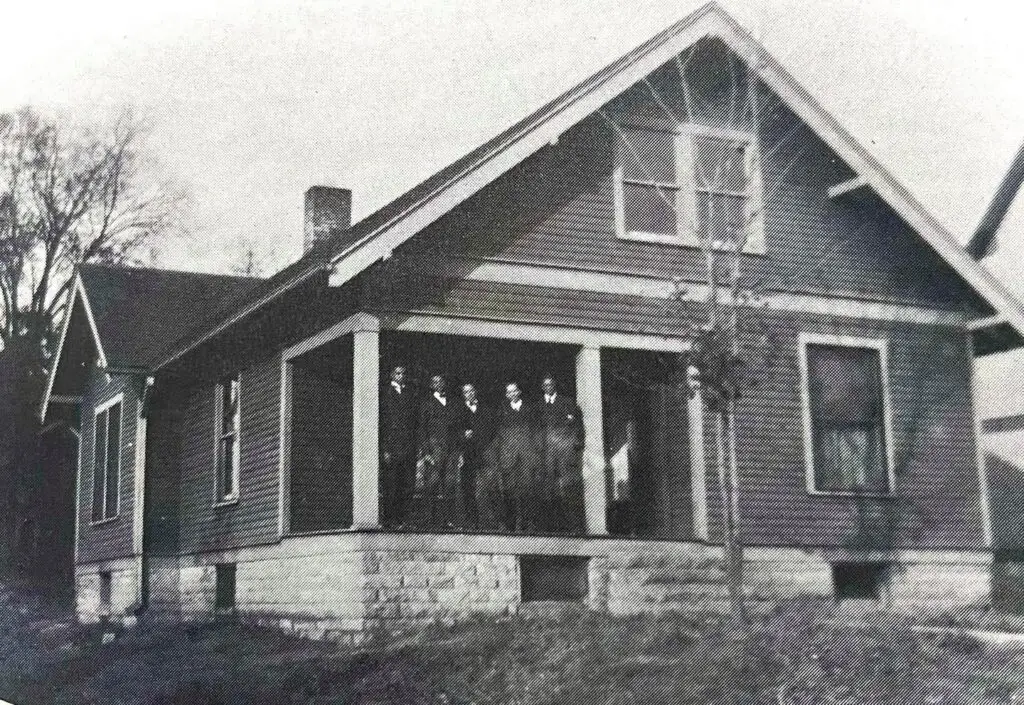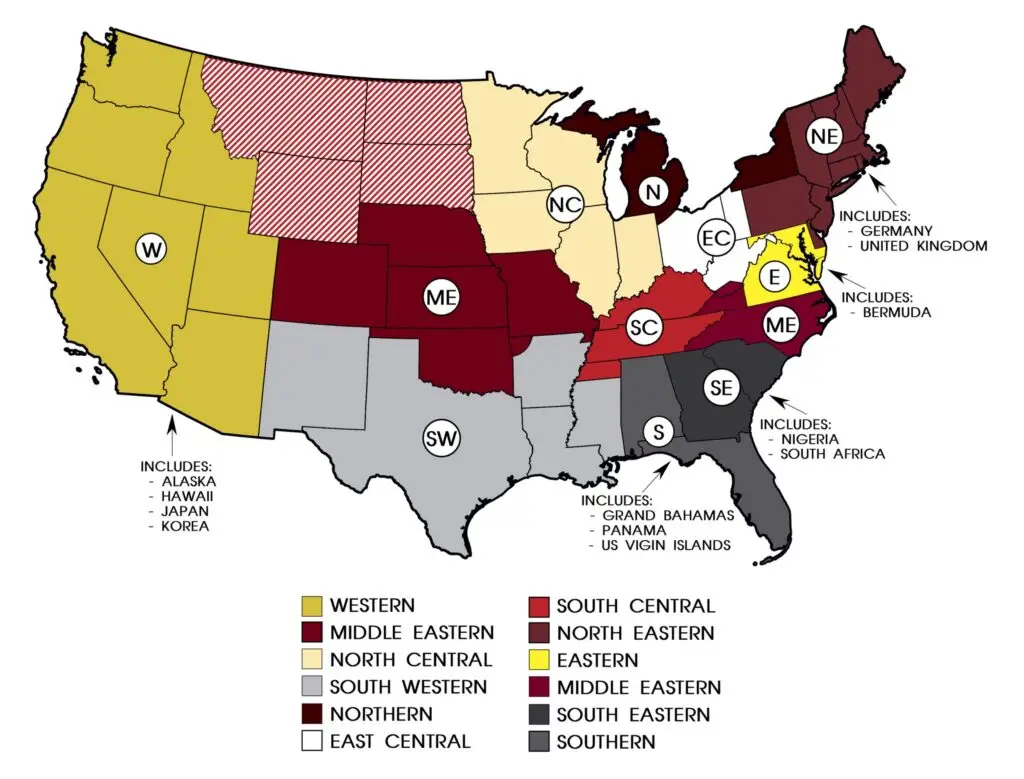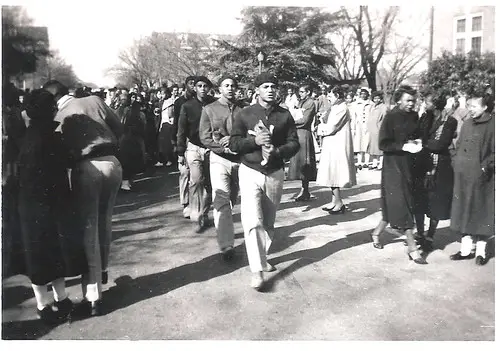
Kappa Alpha Psi, a college Fraternity, now comprised of functioning Undergraduate and Alumni Chapters on major campuses and in cities throughout the country, is the crystallization of a dream.
– The Story of
Kappa Alpha Psi

Kappa Alpha Psi® is the 2nd oldest existing collegiate historically Black Greek Letter Fraternity and the 1st intercollegiate Fraternity incorporated as a national body. It remains the only Greek letter organization with its Alpha Chapter on Indiana University’s campus. The Fraternity has over 125,000 members with 700 undergraduate and alumni chapters in nearly every state of the United States, and international chapters in Nigeria, South Africa, the West Indies, the United Kingdom, Germany, Korea, and Japan.
Kappa Alpha Psi, a college Fraternity, now comprised of functioning Undergraduate and Alumni Chapters on major campuses and in cities throughout the country, is the crystallization of a dream. It is the beautiful realization of a vision shared commonly by the late Revered Founders: Elder Watson Diggs; Ezra Dee Alexander; Byron Kenneth Armstrong; Henry Tourner Asher; Marcus Peter Blakemore; Paul Waymond Caine; George Wesley Edmonds; Guy Levis Grant; Edward Giles Irvin and John Milton Lee.

It was the vision of these astute men that enabled them in the school year 1910-1911, more specifically the night of January 5, 1911, on the campus of Indiana University at Bloomington, Indiana, to sow the seed of a fraternal tree whose fruit is available to, and now enjoyed by, college men everywhere, regardless of their color, religion or national origin. It is a fact of which KAPPA ALPHA PSI is justly proud that the Constitution has never contained any clause which either excluded or suggested the exclusion of a man from membership merely because of his color, creed, or national origin. The Constitution of KAPPA ALPHA PSI is predicated upon and dedicated to, the principles of achievement through a truly democratic Fraternity.

Kappa Alpha Psi ®, a college Fraternity, was born in an environment saturated in racism. The state of Indiana became the 19th state of the Union in 1816 and it founded Indiana University in Bloomington four years later. This city was largely populated by settlers from below the Mason-Dixon line and therefore found many sympathizers of the Southern cause. Consequently, the few Blacks who took up residence in Bloomington in those early years were socially ostracized and encountered extreme acts of prejudice and discrimination. The state of Indiana became a stronghold for the Ku Klux Klan. Their intolerance toward Blacks fueled the negative mindset of other Whites residing there. Vigilante lynchings of Blacks were commonplace. This environment made day-to-day life for Blacks an arduous task and attempts to successfully achieve in school, nearly impossible. Despite the growing hostility of Whites toward Blacks in Indiana, some Black students sought a college education at Indiana University, as it was a tuition-free university of the highest quality. However, few Blacks could remain longer than a year or so without having to withdraw in search of employment.
The campus of Indiana University at that time did not encourage the assimilation of Blacks. The administration maintained an attitude of indifference, as Blacks slowly matriculated and were likewise swiftly forgotten. The percentage of Blacks on campus was less than 1%. Blacks could go weeks without seeing one another on campus. Blacks were not allowed to reside in on-campus dormitories, were not afforded off-campus accommodations, and they were also denied the use of all other university facilities, and were barred from participating in contact sports. Track and Field was the only sport which Blacks were able to demonstrate their athleticism.
In the school years of 1910-11, a small group of Black students attended Indiana University. Most of them were working their way through school. The number of places where they might assemble was limited. Realizing that they had no part in the social life of the university and drawn together by common interests, they decided that a Greek-letter fraternity would do much to fill the missing link in their college existence.
Two of these men, Elder Watson Diggs and Byron Kenneth Armstrong, had previously attended Howard University and had come into contact with men belonging to the only national Black Greek-Letter Fraternity currently in existence. Their experiences at Howard gave rise to the chief motivating spirits which sowed of the seed for a fraternity at Indiana University and crystallized the idea of establishing an independent Greek-letter organization.
Consequently, eight other men met with Diggs and Armstrong for the purpose of organizing such a fraternity. The charter members were Elder Watson Diggs, Byron K. Armstrong, John M. Lee, Henry T. Asher, Marcus P. Blakemore, Guy L. Grant, Paul W. Caine, George W. Edmonds, Ezra D. Alexander, and Edward G. Irvin. The Founders sought one another’s company between classes and dropped by one another’s places of lodging to further discuss the means of formulating the fledgling fraternity in an effort to relieve the depressing isolation. They found that through these close interactions, they had common interests and a close bond began to emerge. The organization was given the temporary name of Alpha Omega, while they further developed the formation of the organization. Diggs presided as president, while Irvin was assigned as temporary secretary of Alpha Omega. Alpha and Omega, the first and the last letters of the Greek alphabet correlate to Christ and the Founder’s relationship and connection to the church.
The Founders were God-fearing, and serious-minded young men who possessed the imagination, ambition, courage, and determination to defy custom in pursuit of a college education and careers. The ideals of the church were an important foundation of the Fraternity. One of the 5 Objectives of the Fraternity is: “To promote the spiritual, social, intellectual and moral welfare of members.” Many aspects of the Fraternity’s rites are engrained in Christianity ideals and contain excerpts from the Bible.
It was clear at the outset that the new fraternity would not warm over principles or practices of other organizations. Nor would the new Fraternity seek its members in the manner of other Greek organizations – from among the sons of wealthy families or families of social prestige. These men of vision decided the Fraternity would be more than another social organization. Reliance would be placed upon high Christian ideals and the purpose of ACHIEVEMENT.
The Fraternity would seek to raise the sights of Black youths and stimulate them to accomplishments higher than might otherwise be realized or even imagined.
On January 5, 1911, the Fraternity then became known as Kappa Alpha Nu, possibly as a tribute to the Black students of 1903 (the Alpha Kappa Nu Greek Society) who preceded them at Indiana University. These men of vision decided Kappa Alpha Nu would be more than another social organization. It would be the only Greek-letter organization founded with the concept of achievement. Kappa Alpha Nu began uniting college men of culture, patriotism, and honor in a Bond of fraternity. Primarily, under the efforts and leadership of the calm, methodical, and philosophical Elder W. Diggs and the critical, and scholarly Byron K. Armstrong, the Kappa Alpha Nu Fraternity was founded. Through their combined labors, the fraternity’s ritual and ceremonial forms, constitution, hymn, and motto were created, and insignia and emblems were fashioned. Taking careful attention to detail and to ensure the fraternity was rooted in authenticity, these Founder Diggs took courses in Greek heraldry and mythology and applied their combined knowledge to the development of these articles. The idealist, John Milton Lee also contributed significantly to the fledgling organization. For their works to establish the fraternity, Diggs was named permanent chairman, Lee was designated as secretary and Armstrong as sergeant-at-arms. These three Founders are credited with guiding the infant Fraternity through the most perilous years of its life. Able assistance provided by each of the remaining Founders furnished necessary sustenance for the embryonic group. Kappa Alpha Nu became the first incorporated Black Fraternity in the United States once granted a charter by the Indiana Secretary of State on May 15, 1911.

Born out of the vestiges of racism, Kappa Alpha Nu encountered another metamorphosis, partially related to the action of bigotry. One day as one of the Fraternity members, Frank Summers, was running the hurdles, Founder Diggs overheard a White student state, “He is a member of Kappa Alpha Nig”. An additional misunderstanding was being attributed to the acronym of the Fraternity’s Greek letters, KAN. Some confused the abbreviation of the letters to refer to the state of Kansas. The name of the Fraternity and the image it portrayed were of paramount importance.
These incidents caused the Founders to change the name of the Fraternity. The Greek Letter Ψ was chosen in place of N and the Fraternity acquired a distinctive Greek letter symbol and Kappa Alpha Psi ®thereby became an indistinguishable Greek-letter Fraternity. The name was officially changed to Kappa Alpha Psi on a resolution adopted at the Grand Chapter Meeting in December 1914. This change became effective on April 15, 1915.

Since the beginning, every endeavor was directed toward establishing the Fraternity upon a strong foundation before embarking on plans of expansion. Careful consideration was given to ensure the organization established a firm foundation the first year before efforts to expand were attempted. Five chapters were chartered from 1913-1915, centered in the Midwest; with the first chapter being established in the East in 1915. The Epsilon Chapter of Kappa Alpha Psi is the first chapter on the East Coast as well as the first chapter of Kappa Alpha Psi (post the name changing from Kappa Alpha Nu to Kappa Alpha Psi on April 15, 1915). Thus ended the infancy of KAPPA ALPHA PSI, whereupon the Fraternity embarked upon an era of expansion. Except for the years of World War I and II, when some Grand Chapter Meetings were suspended, Kappa Alpha Psi ® has grown and prevailed with unabating impetus.
On April 6, 1919, Kappa Alpha Psi Fraternity, Inc. designated the Chicago Alumni Chapter as its first alumni chapter. Unlike the undergraduate chapters, which were named with Greek letters, alumni chapters were designated by the city in which it was located.
The Provinces
As the Fraternity continued to grow, the membership realized a need for additional oversight. During the tenth Grand Chapter, which was held in Philadelphia, Pennsylvania from December 30, 1920 to January 1, 1921, legislation was adopted to divide the Fraternity into three districts (this would eventually be expanded to 12). Each province was under the charge of an executive officer (Province Polemarch).

The Journal
Kappa Alpha Psi ® was the first Black Greek Lettered Organization to issue a monthly publication. The inaugural edition of the Kappa Alpha Nu Journal debuted in April 1914 and has been printed uninterrupted since, with the exception of 1918 and 1919, due to WWI.

The Scrollers Club
Between the years 1911 and 1919, the Fraternity expanded to include ten undergraduate chapters and one alumni chapter. From the very beginning, members were initiated into the organization by way of a pledge club. In 1919, after a sharp influx of new pledges, the Fraternity needed a more standardized orientation program. As a result, the Zeta Chapter introduced the Scroller Club.

Kappa Alpha Psi ®, now comprised of functioning Undergraduate and Alumni Chapters on major campuses and in cities throughout the country, is the crystallization of a dream. It is the beautiful realization of a vision shared commonly by the late Revered Founders that enabled them to sow the seed of a fraternal tree whose fruit is available to and now enjoyed by college men everywhere, regardless of their color, religion, or national origin.
It is a fact of which Kappa Alpha Psi ® is proud that the Constitution has never contained any clause that either excluded or suggested the exclusion of a man from membership merely because of his color, creed, or national origin.Kappa Alpha Psi ® is the 2nd oldest existing collegiate historically Black Greek Letter Fraternity and the 1st intercollegiate Fraternity incorporated as a national body. It remains the only Greek letter organization with its Alpha Chapter on Indiana University’s campus. The Fraternity has over 125,000 members with 700 undergraduate and alumni chapters in nearly every state of the United States, and international chapters in Nigeria, South Africa, the West Indies, the United Kingdom, Germany, Korea, and Japan.
Kappa Alpha Psi ®, now comprised of functioning Undergraduate and Alumni Chapters on major campuses and in cities throughout the country, is the crystallization of a dream. It is the beautiful realization of a vision shared commonly by the late Revered Founders that enabled them to sow the seed of a fraternal tree whose fruit is available to and now enjoyed by college men everywhere, regardless of their color, religion, or national origin.
It is a fact of which Kappa Alpha Psi ® is proud that the Constitution has never contained any clause that either excluded or suggested the exclusion of a man from membership merely because of his color, creed, or national origin.Kappa Alpha Psi ® is the 2nd oldest existing collegiate historically Black Greek Letter Fraternity and the 1st intercollegiate Fraternity incorporated as a national body. It remains the only Greek letter organization with its Alpha Chapter on Indiana University’s campus. The Fraternity has over 125,000 members with 700 undergraduate and alumni chapters in nearly every state of the United States, and international chapters in Nigeria, South Africa, the West Indies, the United Kingdom, Germany, Korea, and Japan.